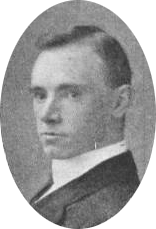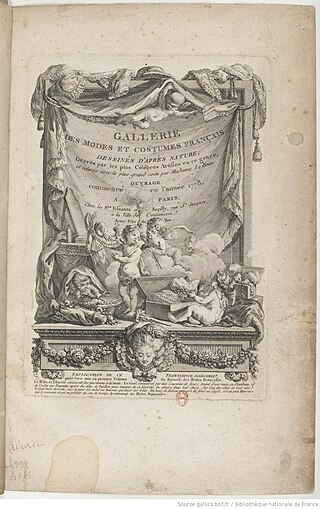
John Rea Neill was a magazine and children's book illustrator primarily known for illustrating more than forty stories set in the Land of Oz, including L. Frank Baum's, Ruth Plumly Thompson's, and three of his own. His pen-and-ink drawings have become identified almost exclusively with the Oz series. He did a great deal of magazine and newspaper illustration work which is not as well known today.
Marimekko Oyj is a Finnish textiles, clothing, and home furnishings company founded by Viljo and Armi Ratia in Helsinki in 1951. Marimekko made important contributions to fashion in the 1960s. It is particularly noted for its brightly colored printed fabrics and simple styles, used both in women's garments and in home furnishings.

Franklin Booth was an American artist known for his detailed pen-and-ink illustrations. He had a unique illustration style based upon his early recreation of wood engraving illustrations with pen and ink. His skill as a draftsman and style made him a popular magazine illustrator in the early 20th-century. He was one of the first modern ex libris designers in the United States.
Jason Brooks is an artist, illustrator and author. He grew up in Brighton on the south coast of England. Brooks is known for his design of the Hedkandi compilations.

Christian Bérard , also known as Bebè, was a French artist, fashion illustrator and designer.
Maurice Vellekoop is a Canadian artist, cartoonist, and illustrator. He is most known for his queer cartoons which often feature naked men. He has drawn pin-ups as well as multi-character comics. Vellekoop is also a fashion designer with his drawings and designs appearing in popular magazines across the United States.

Sir William Russell Flint was a Scottish artist and illustrator who was known especially for his watercolours of women. He also worked in oils, tempera, and printmaking.
Alan Pipes is a British writer on art, product design and graphic design.

threeASFOUR is a New York fashion house – led by Gabriel Asfour, Angela Donhauser, and Adi Gil – known for combining technical innovation and couture craftsmanship with an aesthetic focus on natural geometries. Hailing from Lebanon, USSR, and Israel, respectively, Asfour, Donhauser, and Gil have referred to threeASFOUR as a ‘United Nations of Fashion’, and their collections frequently promote intercultural unity. The house presents their designs at New York Fashion Week, and their work is exhibited by several museums internationally, including the Metropolitan Museum’s Costume Institute and London’s Victoria and Albert Museum. In 2015, threeASFOUR was awarded the Cooper Hewitt National Design Award for fashion design.
Count Renato Zavagli Ricciardelli delle Caminate, professionally known as René Gruau was a fashion illustrator whose exaggerated portrayal of fashion design through painting has had a lasting effect on the fashion industry. Because of Gruau's inherent skills and creativity, he contributed to a change in the entire fashion industry through the new pictures that represented the already popular designs created by designers in the industry. The benefits, including economic stimulation and enhancement of advertising are still present in the industry today via a new way of fashion illustration, fashion photography. Gruau became one of the best known and favorite artists of the haute couture world during the 1940s and 50s working with Femina, Marie Claire, L'Officiel, L'Album Du Figaro and an assortment of "high-style" magazines. Gruau's artwork is recognized and commended internationally in some of Paris and Italy's most prestigious art museums including the Louvre in Paris and the Blank in Italy. In addition to his international fame and recognition, "Gruau's artwork is known for its timeless and enduring style".
Irwin Crosthwait, was a Canadian painter best known for his role as a fashion illustrator.
Christine Berrie is a Scottish illustrator and artist based in Glasgow. She is known for her industrial-themed illustrations, including such objects as wall plates, gas meters, dials, buttons and switches, control boxes, electrical objects, machinery, and appliances.

Amy Davis is an American fashion illustrator, actress, filmmaker, and lo-fi musician. Her illustrations have been in shows all over the world, as well as published in magazines and books. She is married to filmmaker Jon Moritsugu, and helps run his film production company, Apathy Productions.

Frances Tipton Hunter was an illustrator who created covers for The Saturday Evening Post and many other magazines between the 1920s and 1950s. Her work is very similar in style to that of Norman Rockwell.

There are more than 100 illustrators of English-language editions of Alice's Adventures in Wonderland (1865) and Through the Looking-Glass (1871), with many other artists for non-English language editions. The illustrator for the original editions was John Tenniel, whose illustrations for Alice and Looking Glass are among the best known illustrations ever published.
Dorothy Hood (1902–1970) was an American fashion illustrator.

Ruth Sigrid Grafstrom (1905–1986) was an American illustrator, producing significant work in fashion illustration during the 1930s and 1940s.

Galerie des Modes et Costumes Français is a series of fashion and costume plates that was distributed in Paris from 1778 to 1787, during the reign of King Louis XVI of France and Marie Antoinette. The first collected volume, which was produced in 1779, had a title page which bore an allegorical illustration as well as the full title of the collection: Gallerie des modes et des costumes français dessinés d'après nature, Gravés par le plus Célèbres Artistes en ce genre, et colorés avec le plus grand soin par Madame Le Beau. Ouvrage commence en l'année 1778. A Paris, chez le Srs Esnauts et Rapilly rue St. Jacques à la Ville de coutances. Avec priv. Du Roi. Importantly, this lengthier epithet indicates that the engravings of the Galerie were created "d'après nature," or "after nature," meaning that they were intended to represent what was actually worn in the streets of Paris during the latter part of the eighteenth century.
Percy Venner Bradshaw, who often signed PVB, was a British illustrator who also created the Press Art School, a correspondence course for drawing.
Sara Carles Johns was an American artist and fashion illustrator.












